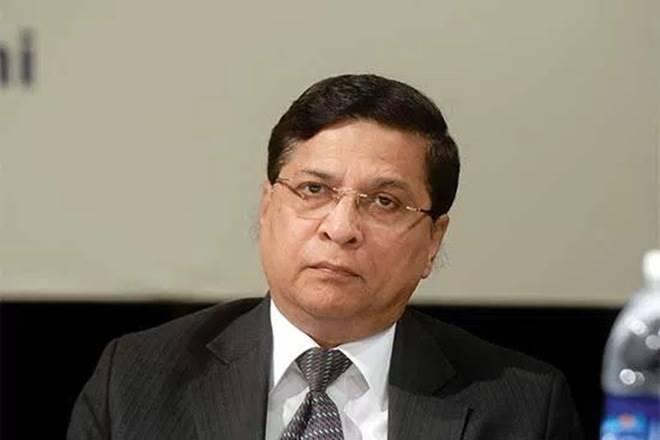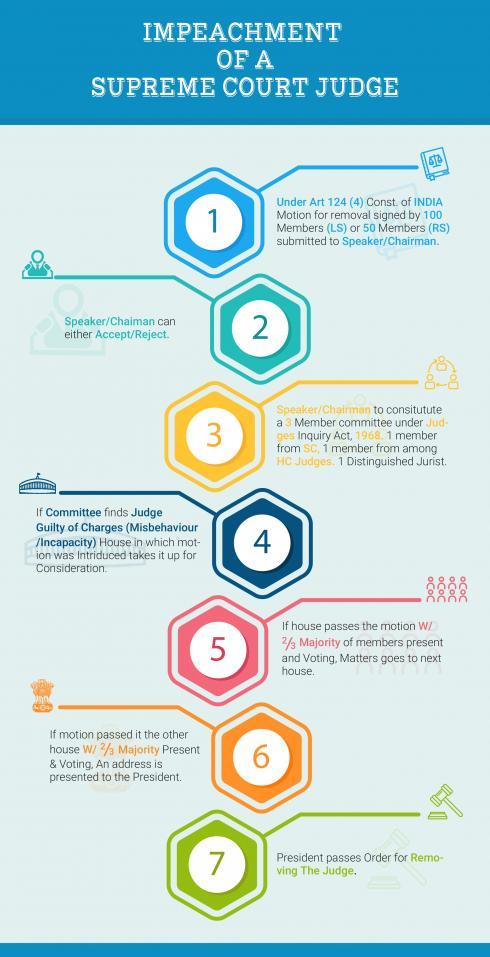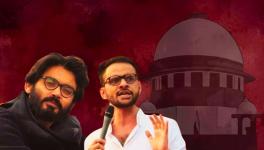An Impossible Impeachment but a Possible Fetter on the Media

Speculation over whether an impeachment motion would arise against the Chief Justice of India Dipak Misra, has been in the public discourse since the Judges’ press conference in January. On Friday, a press conference was held by opposition MPs after submitting a motion for impeaching the CJI, to the Vice President Venkaiah Naidu. On the same day, a Bench of the Supreme Court comprising Justice A. K. Sikri and Justice Ashok Bhushan, heard a PIL regarding restraining discussion on the impeachment of the CJI.
The petition was filed by Shivraj Kadam, the trustee of ‘In Pursuit of Justice’ – a Pune-based NGO. The petition prayed to the Supreme Court to lay down guidelines or modalities to regulate the procedure, prior to instituting an impeachment motion. They also prayed that the Court direct the government to implement such guidelines or modalities, and restrict the media from covering any aspect of an impeachment motion until the motion is passed.

(Newsclick infographics by Nitesh Kumar)
An impeachment motion is instituted under Article 124(4) and Article 217(1)(b). Article 124(4) deals solely with impeaching a Supreme Court Judge, while Article 217(1)(b) deals with a Judge of a High Court. An impeachment motion can be instituted in either house of the Parliament. If the motion is instituted in the Lok Sabha, the motion has to be signed by a minimum of 100 members, and it should be submitted to the Speaker of the House. Whereas, if the motion begins in the Rajya Sabha, the motion has to be signed by a minimum of 50 members and submitted to the Chairman of the Rajya Sabha – the Vice President of India. The grounds on which an impeachment motion can be moved are misbehaviour or incapacity. The present motion, according to the Congress leader Ghulam Nabi Azad, has been signed by 71 members, of which, seven are no longer Rajya Sabha MPs. Therefore, the motion has 64 valid signatures.
However, just because the motion has been submitted, does not mean that a debate can begin immediately. Regardless of whom the motion has been submitted to, the person still has the discretion of whether to accept or reject the motion. If the motion is accepted, then the Speaker of the Lok Sabha or the Chairman of the Rajya Sabha will constitute a three-member-committee under the Judges (Inquiry) Act, 1968. One member of this committe must be a Judge of the Supreme Court, one must be a Chief Justice of a High Court, and one must be an eminent jurist. The Act, however does not specify the objective criteria for choosing the eminent jurist. It only states that the jurist must be eminent in the eyes of the person constituting the committee.
Once the inquiry is complete, the committee will place the report before the house in which, the motion had originated. If the report confirms either incapacity or misbehaviour, the house will debate on the motion. Once the motion is passed with a two-third majority of members present and voting, it will be passed on to the other house. If the motion is passed again in the next house, with a two-third majority of members present and voting, the motion is deemed passed and placed before the President. The President then will pass an order for the removal of the Judge.
The press release by the Rajya Sabha MPs listed five grounds on which the impeachment motion was instituted. Veteran lawyer and Congress leader Kapil Sibal told the press that they had not gone into the details of the merits with the Vice President.
The first was regarding the Prasad Educational Trust case (Medical College Bribery case). In this case, allegations of illegal gratification lie against several members of the judiciary and of the legal fraternity. An FIR had been registered by the CBI. The FIR contains transcripts of conversations where indirect references to the CJI have allegedly been made.
The second was that the CJI allegedly dealt with the same case on both the administrative as well as judicial side. The CJI had heard the petitions regarding the Prasad Educational Trust case, even though there were allegations against him in the same matter.
The third was that when the matter had come up for hearing on November 9, an antedated note (November 6) was placed before the Judges hearing the petition. The allegation here is of forgery.
The fourth relates to when the CJI was an advocate. He had allegedly acquired land on the basis of a false affidavit. Though the Additional District Magistrate had passed orders cancelling the allocation in 1985, the CJI gave up possession only in 2012, after being elevated to the Supreme Court.
The fifth alleges that the CJI abused his administrative power as the master of the roster. The allegation states that the CJI arbitrarily assigns cases of particular advocates in politically sensitive cases to select judges, in order to achieve a predetermined outcome.
At present, the math is not in the opposition’s favour. It is unlikely that the motion may even result in an inquiry committee to be formed. Further, the procedure laid down in the Constitution regarding the impeachment of a Judge, places undue weight in favour of the party that forms the government. Therefore, one cannot be wrong to expect the motion to die a quiet death. On the other hand, the PIL seeking restraint on the part of the media brings to the fore another aspect of the general atmosphere that pervades over the country. It can be seen in the context of three recent judicial decisions, which were delivered in a quick succession: Aseemanand’s acquittal in the Mecca Masjid bombing case, dismissing of the petitions seeking an SIT inquiry into the death of Judge Loya, and former BJP MLA Maya Kodnani’s acquittal in the Naroda Patiya massacre case.
While the PIL may be in the best interest of the majesty of the Judiciary, in the light of the present circumstances, ordinary citizens with a clear Constitutional conscience have every reason to be worried. During the Emergency, the executive used every tool to shackle opposition and maintain its hold. In the present case, it appears that a proclamation of emergency is not entirely required. Justice Kurian Joseph’s letter to the CJI referring to the delay in appointing Judges succinctly described the situation as one, which “sends a wrong message, which is loud and clear to all Judges down the line”. Muzzling the media is just another step closer to the inglorious past.
Get the latest reports & analysis with people's perspective on Protests, movements & deep analytical videos, discussions of the current affairs in your Telegram app. Subscribe to NewsClick's Telegram channel & get Real-Time updates on stories, as they get published on our website.
























